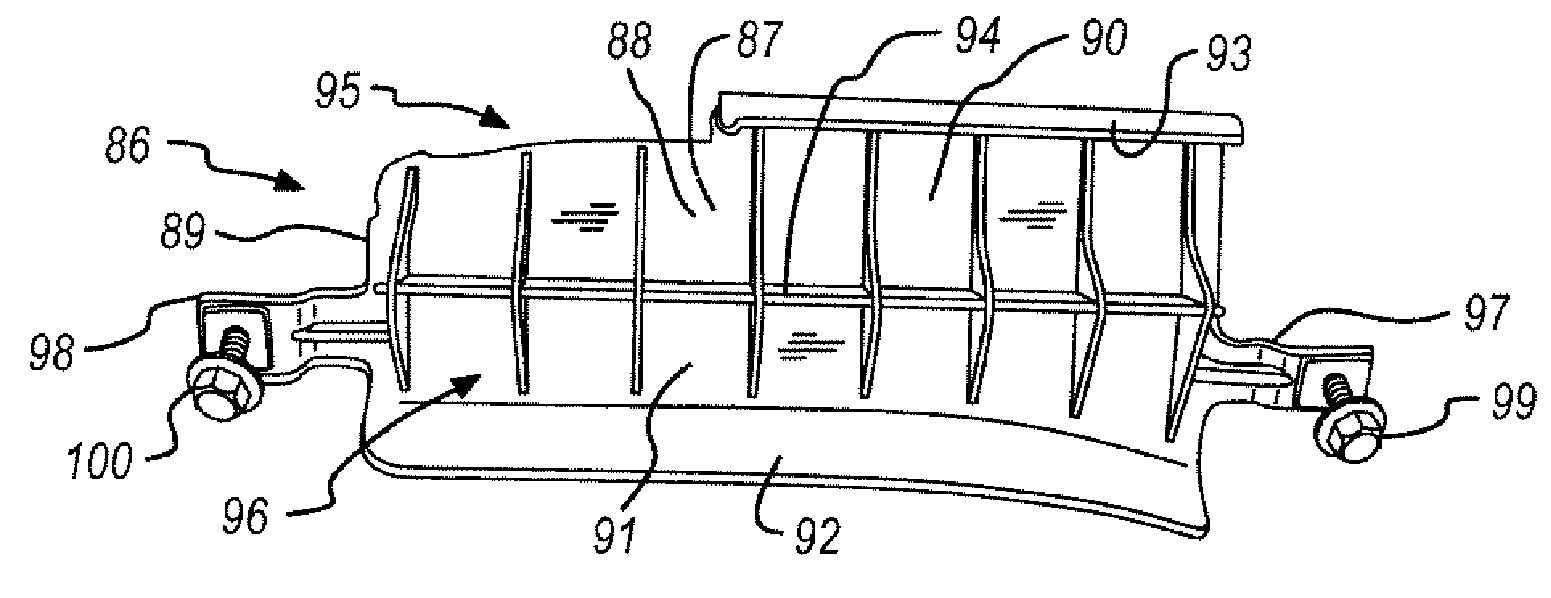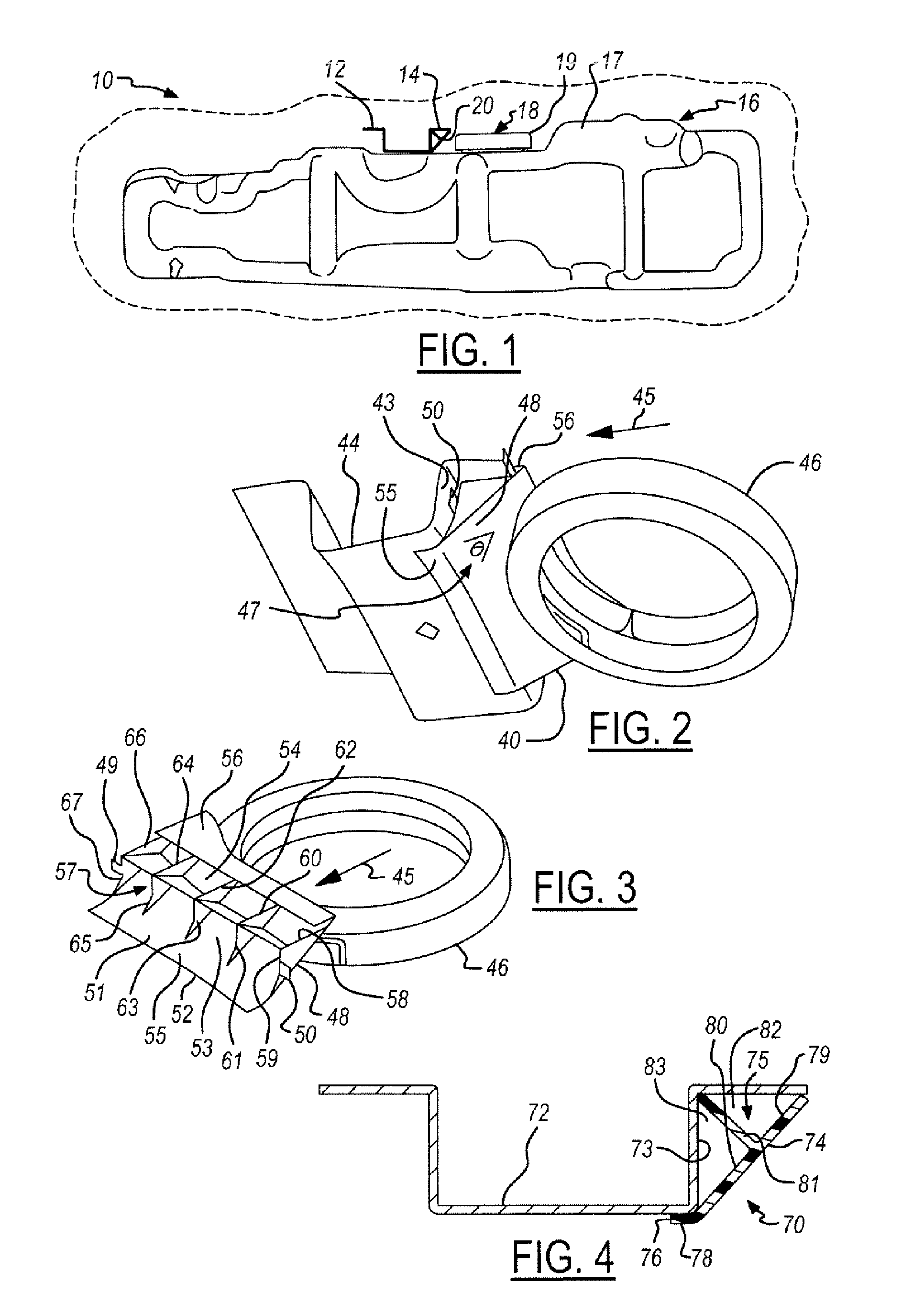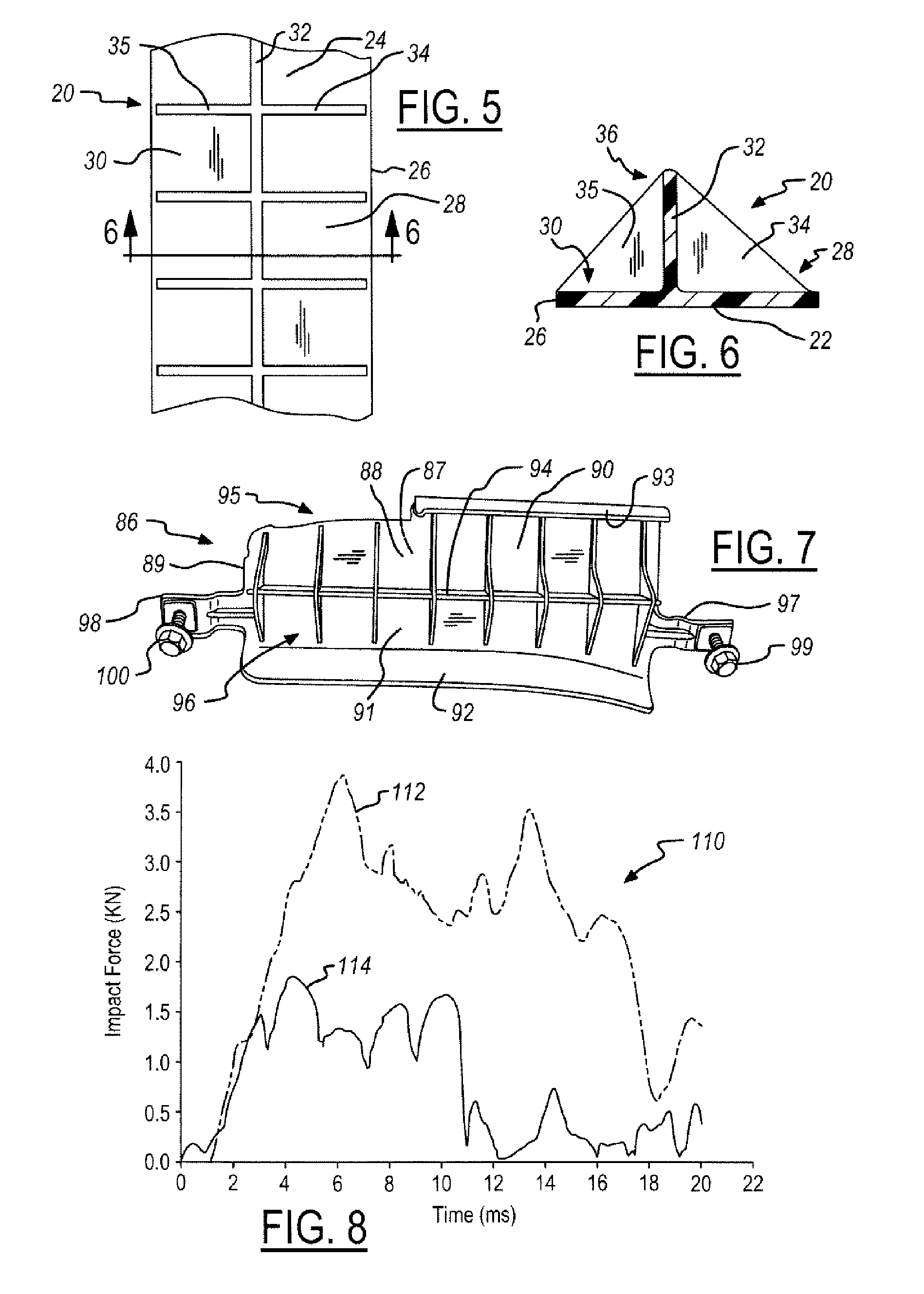Fuel tank protector shield
a technology for protecting shields and fuel tanks, applied in vehicle arrangements, roofs, transportation and packaging, etc., can solve the problems of damage to the fuel sending unit, damage to the mason ring or the sending unit of the fuel tank, and the damage to the mason ring or the sending unit, so as to reduce the impact force and reduce the impact force to a body. , the effect of lessening the impact for
- Summary
- Abstract
- Description
- Claims
- Application Information
AI Technical Summary
Benefits of technology
Problems solved by technology
Method used
Image
Examples
first embodiment
[0020]FIG. 1 illustrates a cutaway side view the shield 20 used in an automotive vehicle 10 to advantage. The automotive vehicle 10 includes a cross member 12, a fluid reservoir tank 16 and a shield 20. The inventive shield 20 reduces the impact force to the fluid reservoir tank 16 should the fluid reservoir tank 16 be accelerated toward the cross member 12 or the cross member12 be accelerated toward the fluid reservoir tank 16.
[0021] The cross member 12 has a first side 14 in which the shield 20 may be attached or connected. A person of skill in the art will recognize that the shield 20 may be attached or connected to any of the other sides of the cross member 12, but will be used to advantage if positioned as suggested below.
[0022] The fluid reservoir tank 16 has a container 17, a lid 18, and a mason ring 19. The lid 18 is securely sealed to the container 17 by mason ring 19. A person of skill in the art will recognize that the lid 18 and mason ring 19 may be formed from a single...
second embodiment
[0048]FIG. 4 is a cross-sectional view of the shield 70 being used to advantage. The vehicle (not shown) includes a cross member 72, a reservoir 71 and a shield 70. The inventive shield 70 reduces the impact force to the reservoir 71 should the reservoir 71 be accelerated toward the cross member 72 in the direction of the shield 70.
[0049] The cross member 72 has a first side 73 in which the shield 70 may be attached or connected to the cross member 72. A person of skill in the art will recognize that the shield 70 may be attached or connected to any of the other sides of the cross member 72, but will be used to advantage if positioned within the directional path as described above.
[0050] In the present embodiment, the shield 70 is attached to the first side 73 of the cross member 72 and positioned between the reservoir 71 and the cross member 72 in the normal direction of vehicle travel. The shield 70 may be used to advantage by absorbing energy should the reservoir 71 impact the s...
third embodiment
[0057]FIG. 7 is a perspective view of the shield 86. The present embodiment of the shield 86 has similarities to the two-dimensional representation of the shield 40 as shown in FIGS. 2 and 3. Moreover, this shield 86 is designed to fit upon a non-uniform cross member of a vehicle.
[0058] In the present embodiment, he shield 86 includes a ramped surface 87, an inner surface 88 and a periphery 89. The periphery 89 delineates the inner surface 88 from the ramped surface 87. As represented in the present embodiment, the ramped surface 87, the inner surface 88 and the periphery 89 form a solid body.
[0059] The inner surface 88 of the shield 86 is further divided into an upper area 90 and a lower area 91. The shield 86 includes a ridge 94 that extends perpendicularly from the inner surface. In the present embodiment, the ridge 94 approximately proportions the upper area 90 from the lower area 91. The ridge 94 extends from the periphery 89 on one end of the shield 86 to the periphery 89 on ...
PUM
 Login to View More
Login to View More Abstract
Description
Claims
Application Information
 Login to View More
Login to View More - R&D
- Intellectual Property
- Life Sciences
- Materials
- Tech Scout
- Unparalleled Data Quality
- Higher Quality Content
- 60% Fewer Hallucinations
Browse by: Latest US Patents, China's latest patents, Technical Efficacy Thesaurus, Application Domain, Technology Topic, Popular Technical Reports.
© 2025 PatSnap. All rights reserved.Legal|Privacy policy|Modern Slavery Act Transparency Statement|Sitemap|About US| Contact US: help@patsnap.com



